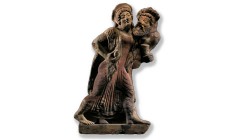Restitution of art and cultural objects and its limits
Roodt, C. (2013) ‘Restitution of art and cultural objects and its limits’, Comparative and International Law Journal of Southern Africa XLVI, 286-307.
Art and cultural objects have a complex nature and status. A legal approach cannot escape having to state which objects come within the scope of the definition, but an objective legal definition in abstracto is difficult to provide. Because the flows of licit and illicit objects are so intermixed, both the legitimate and underground art markets are implicated in the trade involving these objects. Global legal diversity further complicates the distinction between the licit and the illicit trade. This article takes stock of restitution and suitable dispute settlement mechanisms against this backdrop. Restitution processes have become more openly policy-oriented, and the meaning of ‘restitution’ now extends to overcoming the legal obstacles in the way of return. Law can provide the framework for negotiation and dispute settlement in many cases, but the ethical dimension is a particularly powerful agent for restitution of Nazi spoliated art and human remains.
